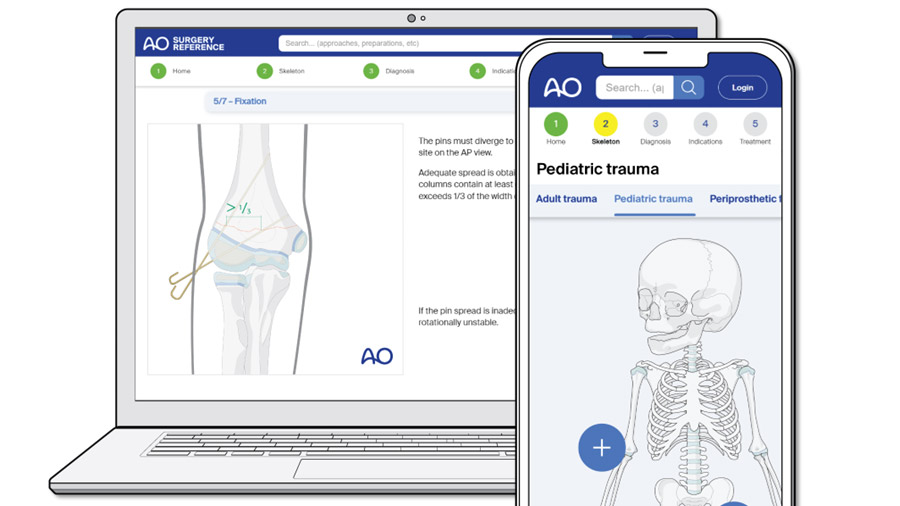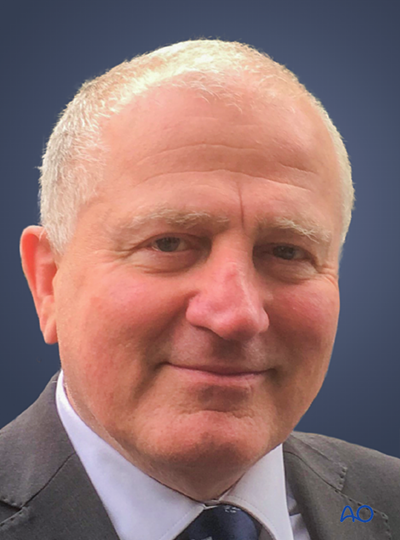Meet the AO Surgery Reference editors: Fergal Monsell describes a unique tool for pediatric trauma management

A pediatric orthopedic surgeon for more than 25 years, Prof Fergal Monsell, MD, is invested in ensuring optimal outcomes for his young patients. A consultant pediatric trauma surgeon at the Royal Hospital for Children in Bristol, United Kingdom, for nearly 20 years and a visiting professor at Cardiff University, Monsell calls the AO Surgery Reference (AO SR) “one of a kind.”
“It is unique in its accessibility online, even from a mobile phone, in that it deals with pediatric trauma in a way that most, if not all, conventional textbooks are lacking, allowing you to navigate through clinical problems in real time,” explained Monsell, who first brought his expertise the AO SR eight years ago as an author. “Since then, I have had the opportunity to contribute as a section editor and, most recently, as general editor.”
As general editor of the pediatric trauma section, Monsell is responsible for recruiting authors, editing written content, and coordinating that written content with the visual content including medical illustrations. The pediatric trauma section today encompasses more than 800 pages of content covering eight anatomical regions on the long bones and includes over 3,700 illustrations. The latest publication is on distal tibial and fibular fracture management.
“It is important to appreciate the differences between adult and pediatric trauma as well as what is similar—if not identical,” he explained. “But then there are very specific characteristics of pediatric patients in general and pediatric bone in particular. That means you have to have different skills—but the trick is knowing how to use them. The AO SR, pediatric trauma section, helps enormously because it is written from the perspective of a non-specialist surgeon who is managing pediatric trauma.”
A truly global resource
The AO SR is structured to be useful to a broad spectrum of surgeon users, Monsell pointed out.
“For example, whether you have no equipment, very low-tech, or even the most advanced equipment, there are descriptions for managing pediatric trauma. You choose what is most appropriate to your practice,” he said. “So, we don’t just describe very high-tech approaches that are not available to surgeons globally.”
Monsell said the pediatric trauma content is, indeed, used globally—and it is used repeatedly.
“It is used very frequently in North America, Europe, and India, but if you look at the user statistics, it is used throughout the world. We expect that as the pediatric trauma section becomes more popular and widely recognized, its use will increase,” he said. “We see a gradual increase in overall use as people return to the AO SR and see that content has been added.”
Whether a surgeon is using the AO SR for last-minute learning just before tackling a case or wanting deep-dive education in pediatric trauma, this free online resource meets a wide variety of needs.
“What we hope is that people will use it for general education, to keep up with development in pediatric trauma, and as a last-minute learning tool that will allow them to either learn or to refresh their skills immediately before managing a case,” Monsell said.
‘Refresh yourself’
Even Monsell—after nearly three decades of practice—consults the AO SR pediatric trauma section.
“I absolutely use it—for things I previously would have gone to textbooks for, like approaches we don’t use very often,” he explained. “Even if it’s something I think I’ve done 100 times, I think it’s good discipline to just refresh yourself and be very clear about your plan and your alternatives.”
Monsell’s advice to those who have not yet discovered the AO SR is simple:
“Next time you have a case, just find the relevant anatomical region and follow it through on the AO SR. Think about what you would have done and how the AO SR either confirms that your plan was good or gave you insight that made you do something differently,” he said. “Just try it out.”



